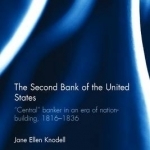The Second Bank of the United States: Central Banker in an Era of Nation-Building, 1816-1836
BookThis item doesn’t have any media yet
2016 | Business & Finance
The year 2016 marks the 200th anniversary of the founding of the Second Bank of the United States (1816-1836). This book is an economic history of an early central bank, the Second Bank of the United States (1816-36). After US President Andrew Jackson vetoed the re-chartering of the Bank in 1832, the US would go without a central bank for the rest of the nineteenth century, unlike Europe and England. This book takes a fresh look at the role and legacy of the Second Bank. The Second Bank of the United States shows how the Bank developed a business model that allowed it to make a competitive profit while providing integrating fiscal services to the national government for free. The model revolved around the strategic use of its unique ability to establish a nationwide system of branches. This book shows how the Bank used its branch network to establish dominance in select money markets: frontier money markets and markets for bills of exchange and specie. These lines of business created synergies with the Bank's fiscal duties, and profits that helped cover their costs.
The Bank's branch in New Orleans, Louisiana, became its geographic centre of gravity, in contrast with the state-chartered banking system, which was already, by the 1820s, centred around New York. This book is of great interest to those who study banking and American history, as well as economic students who have a great interest in economic history.
Related Items:
| Published by | Taylor & Francis Ltd |
| Edition | Unknown |
| ISBN | 9781138786622 |
| Language | N/A |
Images And Data Courtesy Of: Taylor & Francis Ltd.
This content (including text, images, videos and other media) is published and used in accordance
with Fair Use.
